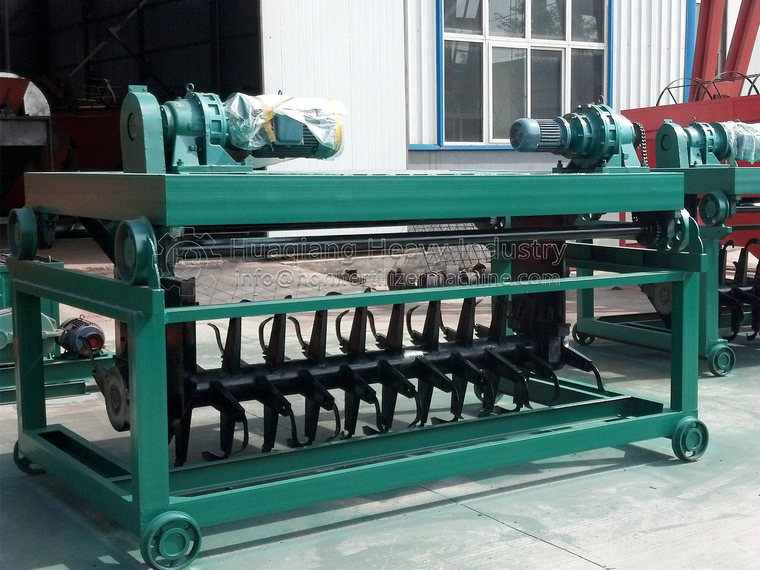The method and steps of treating duck manure with a slot type organic fertilizer tipping machine
The method and steps of treating duck manure with a slot type organic fertilizer tipping machine
1. Stir well the fermentation agent: Add an appropriate amount of organic fertilizer fermentation agent to about 3-5 tons of duck manure. Add an average of 20-30 kilograms of rice bran, corn, and bran to each kilogram of fermentation agent, stir well, and sprinkle them into the prepared materials (referring to the duck manure adjusted for dry and humidity in step 2) for the best effect.
2. Moisture regulation: During the process of fermenting organic fertilizers, it is very important to determine whether the moisture content is suitable. It should not be too high or too low, and should be kept at 60-65%. The judgment method is to tightly grasp a piece of material, see a watermark on the finger joint, but do not drip, and it is advisable to disperse on the ground (if the moisture is too high, dry straw powder, wheat bran, and bran can be added to neutralize the moisture).
3. Building a fermentation pile: When making a fermentation pile, it should not be too small or too short. If it is too small, it will affect fermentation. The height is generally around 1.5 meters, the width is about 2 meters, and the fermentation effect of a pile with a length of 2-4 meters or more is better. The top layer is covered with semi wet straw (especially during composting in winter to provide insulation). If it rains, it can be simply covered with plastic film, but there is no need to seal it (note: straw decomposition is aerobic fermentation, not sealed, and it is required to be stacked loosely as much as possible). On sunny days outside of winter, the plastic film can be opened once a day to facilitate aeration and aerobic fermentation. To avoid rain, If conditions permit, a rain shelter can be set up above the material to prevent it from getting wet. When building a pile, it is advisable to add organic materials such as straw powder, mushroom residue, peanut shell powder, or rice husk, sawdust, etc. to the material in order to regulate its aeration. If rice husk or sawdust are added, the fermentation time should be extended due to their high cellulose lignin content.
4. Mixing and aeration: This is compost fermentation, and oxygen fermentation is necessary. Therefore, during the fermentation process, oxygen supply measures should be increased. Stacking should not be tightly pressed, and natural looseness should be maintained. After stacking, a stick can be used to poke several holes in the manure pile to achieve mixing, frequent flipping, and aeration, otherwise anaerobic fermentation will affect the material fermentation effect.
5. Fermentation completion: generally, after 72 hours of duck manure accumulation, the temperature will rise to 50~60 ℃, and can reach more than 65 ℃ on the fourth day. Under this high temperature, it is recommended to start loosening the material, which can be overturned once, or inserted with a stick or a long rake to loosen the material for several times. In general, during the fermentation process, there will be 2-3 times of high temperatures above 65 ℃, which can be overturned 2-3 times to complete the fermentation, completely deodorize the material, ferment and mature, and sterilize and kill insects. The symbol of success is that the material has completely lost the foul smell of feces, and instead has a faint aroma after biological fermentation.
The fermentation time of the slot type organic fertilizer tipping machine depends on the degree of pollution of the raw materials used and whether the added straw is used for cutting short. Alternatively, if the manure is foul smelling, the corresponding fermentation time is longer, which may take more than 20 days. If compared to fresher manure, the fermentation can be successful in about 15 days. During this period, the manure is loosened every 3 days, and only needs to be loosened or flipped twice.


.jpg)

.jpg)


.jpg)
